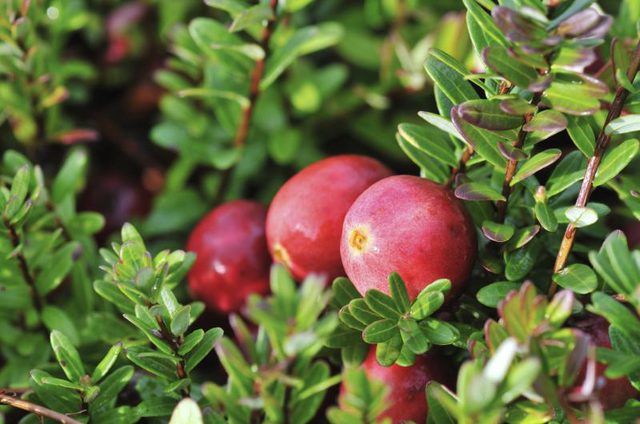Bulbs
Flower Basics
Flower Beds & Specialty Gardens
Flower Garden
Garden Furniture
Garden Gnomes
Garden Seeds
Garden Sheds
Garden Statues
Garden Tools & Supplies
Gardening Basics
Green & Organic
Groundcovers & Vines
Growing Annuals
Growing Basil
Growing Beans
Growing Berries
Growing Blueberries
Growing Cactus
Growing Corn
Growing Cotton
Growing Edibles
Growing Flowers
Growing Garlic
Growing Grapes
Growing Grass
Growing Herbs
Growing Jasmine
Growing Mint
Growing Mushrooms
Orchids
Growing Peanuts
Growing Perennials
Growing Plants
Growing Rosemary
Growing Roses
Growing Strawberries
Growing Sunflowers
Growing Thyme
Growing Tomatoes
Growing Tulips
Growing Vegetables
Herb Basics
Herb Garden
Indoor Growing
Landscaping Basics
Landscaping Patios
Landscaping Plants
Landscaping Shrubs
Landscaping Trees
Landscaping Walks & Pathways
Lawn Basics
Lawn Maintenance
Lawn Mowers
Lawn Ornaments
Lawn Planting
Lawn Tools
Outdoor Growing
Overall Landscape Planning
Pests, Weeds & Problems
Plant Basics
Rock Garden
Rose Garden
Shrubs
Soil
Specialty Gardens
Trees
Vegetable Garden
Yard Maintenance
How to Harvest Cranberries
How to Harvest Cranberries. Most famous for the Thanksgiving sauce created from their 1/2- to 3/4-inch-long tart, red berries, cranberries (Vaccinium macrocarpon) are creeping plants with leathery, evergreen leaves and pink flowers. Hardy in U.S. Department of Agriculture plant hardiness zones 3 through 8, the plants seldom surpass 1 foot in height...
Most famous for the Thanksgiving sauce created from their 1/2- to 3/4-inch-long tart, red berries, cranberries (Vaccinium macrocarpon) are creeping plants with leathery, evergreen leaves and pink flowers. Hardy in U.S. Department of Agriculture plant hardiness zones 3 through 8, the plants seldom surpass 1 foot in height and 3 feet in width. Harvesting their berries is a simple process for the home gardener, but raising the plants – so that you will have berries to pick – can be more complicated.
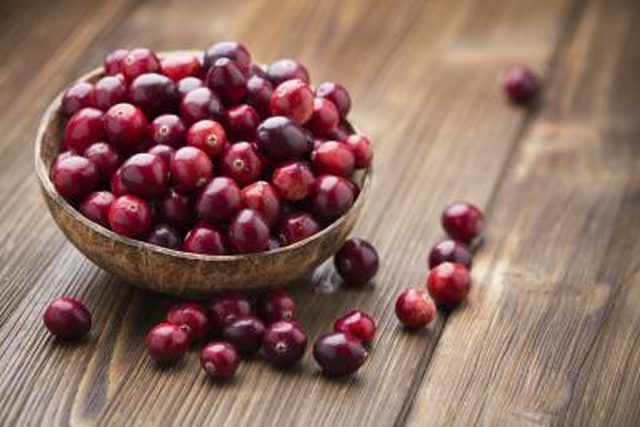
Cranberry fruits should be harvested after they turn red and before the first hard frost, which generally occurs in September to mid-October in many U.S. locations. Break open a few of the fruits first to verify that their seeds are brown, which indicates that the berries are ripe. Then the fruits can be picked by hand. Keep only the firm red ones, and discard all that are shriveled or discolored.
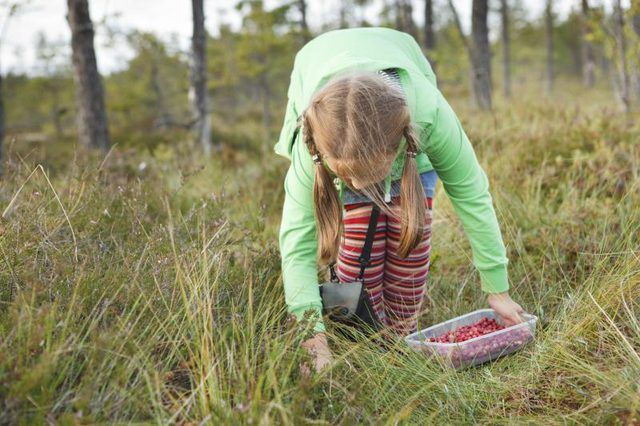
Cranberry fruits will keep fresh in a refrigerator’s crisper compartment for at least one month. If you wish to retain them for longer than that, simply freeze them whole -- because they don't require blanching -- and leave them in a freezer until they are needed. Then drop them into a colander and wash them off briefly under cold water before adding them to your recipes.
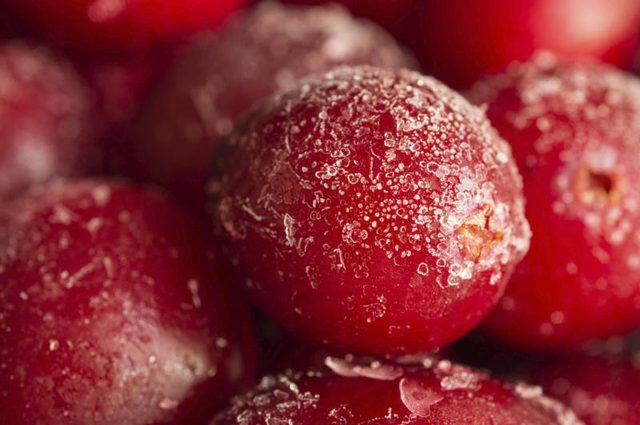
Because cranberry plants require extremely acidic soil, with a pH of 4.0 to 5.0, creating a special bed filled with a peat moss and sand mixture is necessary for them. Do so by excavating the soil in your chosen location – which should receive sunlight all day -- to a depth of 8 inches in mid-spring. If that soil is sandy, line the created depression with 6-millimeter plastic sheeting that has had drainage holes poked through it. The liner isn't required when the soil is mostly clay. Fill the depression, lined or not, with a combination of 2 parts peat moss and 1 part sand. For every 32 square feet of the mixture, add 1 pound each of blood meal and rock phosphate, 1/2 pound of bone meal and 1 cup of Epsom salts. The result is a planting mixture. Before you plant cranberries, wet the planting mixture so that it is damp but not soggy; wetting the planting mixture may require several waterings over several days because peat moss can be slow to take up moisture. Plant 1-year-old rooted cranberry plant cuttings 1 foot apart in the bed, with the cuttings' root balls 2 inches beneath the surface of the planting mixture.
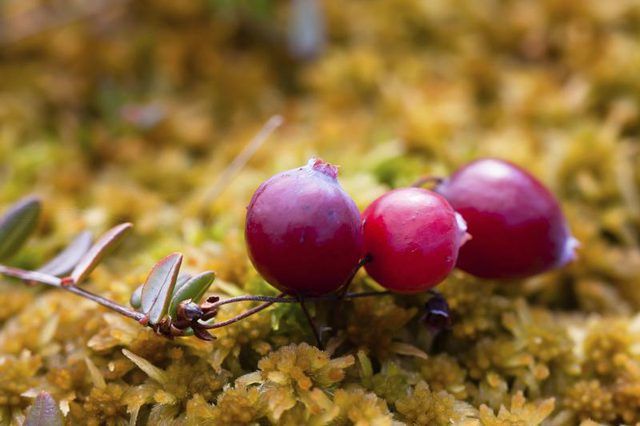
The cranberry plants should begin creeping and rooting over the new bed their first year. Keep their soil moist to at least 1 inch beneath the surface. About Thanksgiving time, mulch the plants' soil with a several-inches-thick layer of dead leaves or pine needles, not letting the mulch touch the plants. In early April of their second year, you can remove the mulch and sprinkle a 1/2-inch-deep layer of sand on top of the soil surface to suppress weeds and encourage the formation of the upright stems on which blossoms form. Spray the plants' soil at that time with a 2-4-1 hydrolyzed fish emulsion, mixing 2 tablespoons of the emulsion with 1 gallon of water to create the spray mixture. Your cranberries may begin to produce some uprights and blossoms that year. If they do, spray their soil again with the emulsion when the blooms begin to appear and once more after the fruits appear. Repeat all these processes in subsequent years.
